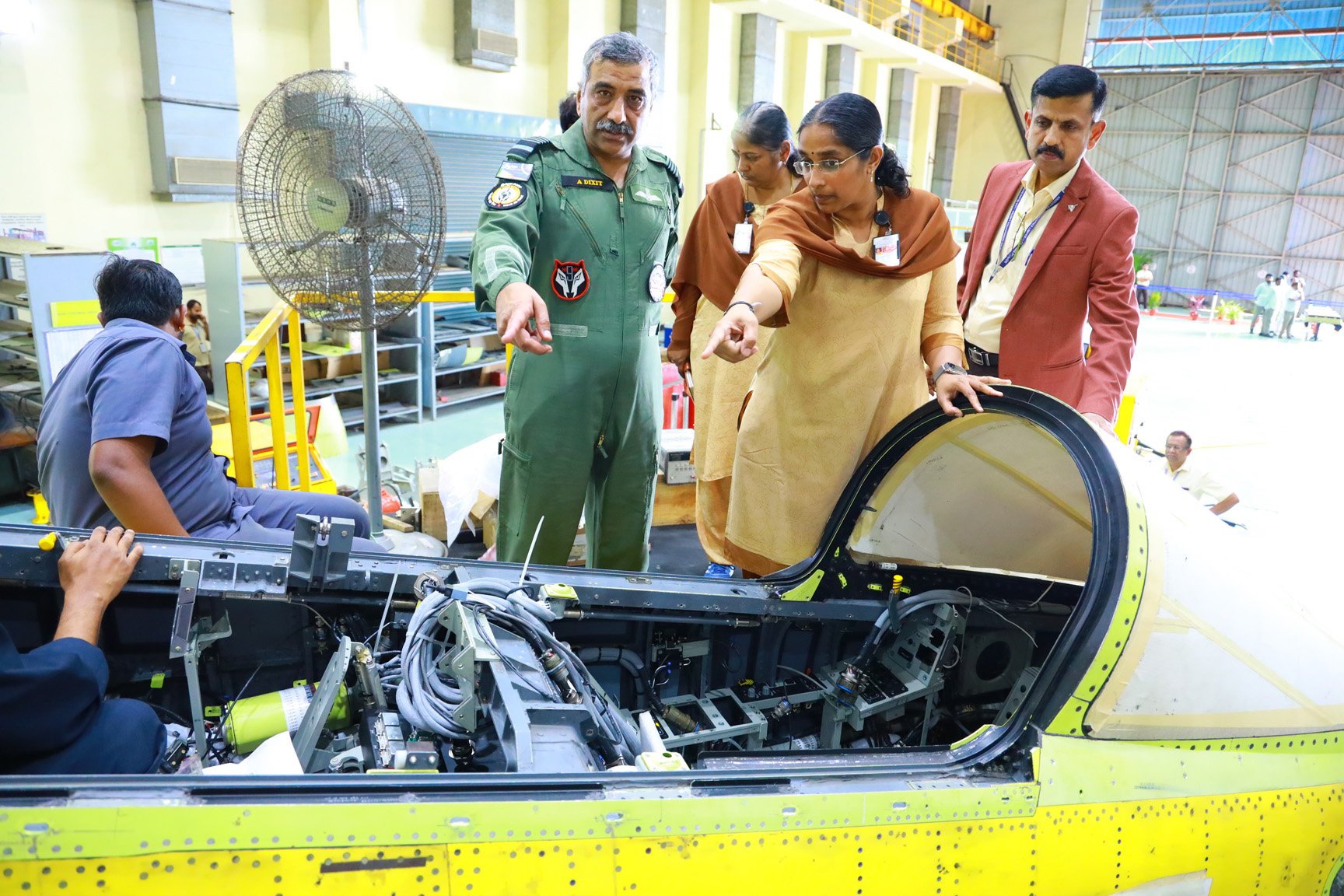SOURCE: AFI

In a significant push towards bolstering the Indian Air Force’s (IAF) indigenous fighter fleet and accelerating India’s self-reliance in defence manufacturing, the Ministry of Defence (MoD) has directed Hindustan Aeronautics Limited (HAL) to deliver 12 Light Combat Aircraft (LCA) Tejas in the calendar year 2025. Furthermore, the MoD has outlined an ambitious roadmap for HAL to scale up production to 20 Tejas aircraft annually starting from 2026 onwards. This directive underscores the government’s commitment to the “Make in India” initiative and aims to ensure that the IAF’s operational requirements are met through domestically developed platforms.
HAL has already delivered a limited number of Tejas aircraft to the IAF, with the first squadron, No. 45 “Flying Daggers,” inducted in 2016, followed by the second squadron, No. 18 “Flying Bullets,” in 2020. However, production rates have historically lagged behind the IAF’s expectations due to supply chain constraints, delays in certification, and the complexity of integrating advanced systems into the Mk-1A variant. The MoD’s new targets of 12 aircraft in 2025 and 20 annually thereafter signal a renewed focus on overcoming these bottlenecks and ramping up production to meet the IAF’s operational timelines.
To meet the MoD’s targets, HAL has been working on enhancing its production infrastructure and streamlining its supply chain. The company has established two dedicated assembly lines for the Tejas—one in Bengaluru and a second in Nashik—each capable of producing up to 8 aircraft annually. HAL has also partnered with private sector players, such as Larsen & Toubro and Dynamatic Technologies, to outsource the manufacturing of sub-assemblies and components, thereby increasing throughput and reducing delivery timelines.
In addition to expanding its own capacity, HAL has been tasked with ensuring the timely delivery of critical systems for the Tejas Mk-1A, including the EL/M-2052 Active Electronically Scanned Array (AESA) radar, indigenous avionics, and advanced weaponry like the Astra air-to-air missile and the BrahMos-NG air-to-ground missile. The MoD has emphasized the importance of maintaining quality and adhering to timelines, with HAL reportedly establishing a dedicated project management team to oversee the production and delivery process for the Tejas program.
The target of 12 aircraft in 2025 represents a significant step-up from HAL’s current delivery rate, which has hovered around 4-6 aircraft per year. Achieving this goal will require HAL to address lingering supply chain issues, particularly related to the availability of engines (GE F-404) and other imported components, while simultaneously scaling up production of indigenous systems. The subsequent target of 20 aircraft annually from 2026 onwards aligns with HAL’s long-term goal of achieving a production capacity of 24 aircraft per year by 2028, as outlined in its strategic roadmap.
The Tejas Mk-1A, with its improved avionics, AESA radar, electronic warfare suite, and enhanced weapons capability, offers a significant upgrade over the baseline Mk-1 variant. The aircraft’s agility, low maintenance costs, and ability to operate in diverse environments make it well-suited for India’s operational requirements. By accelerating the delivery of the Tejas, the MoD aims to ensure that the IAF can maintain its combat edge while reducing reliance on foreign imports—a key priority under the “Atmanirbhar Bharat” initiative.
NOTE: AFI is a proud outsourced content creator partner of IDRW.ORG. All content created by AFI is the sole property of AFI and is protected by copyright. AFI takes copyright infringement seriously and will pursue all legal options available to protect its content.